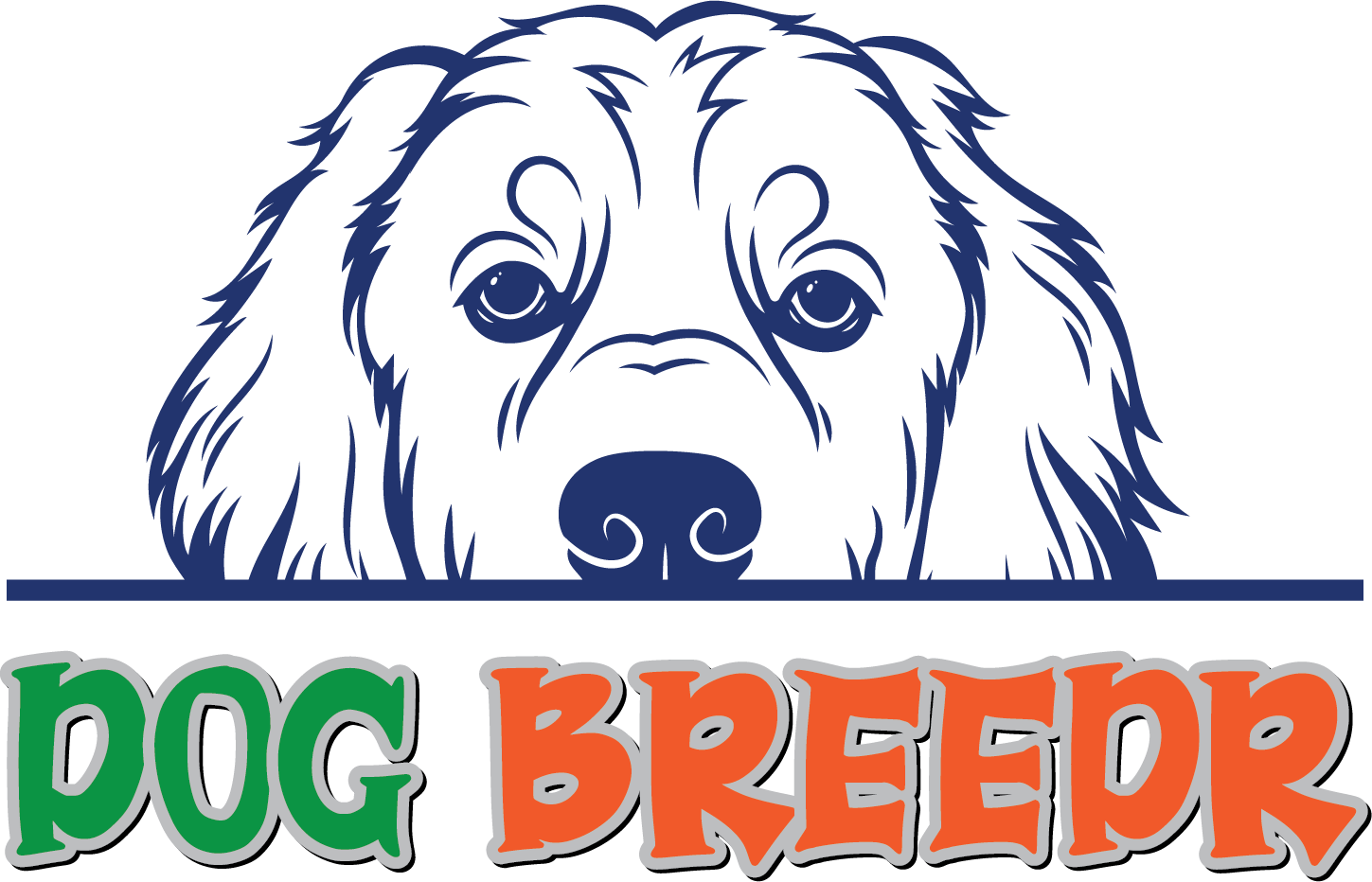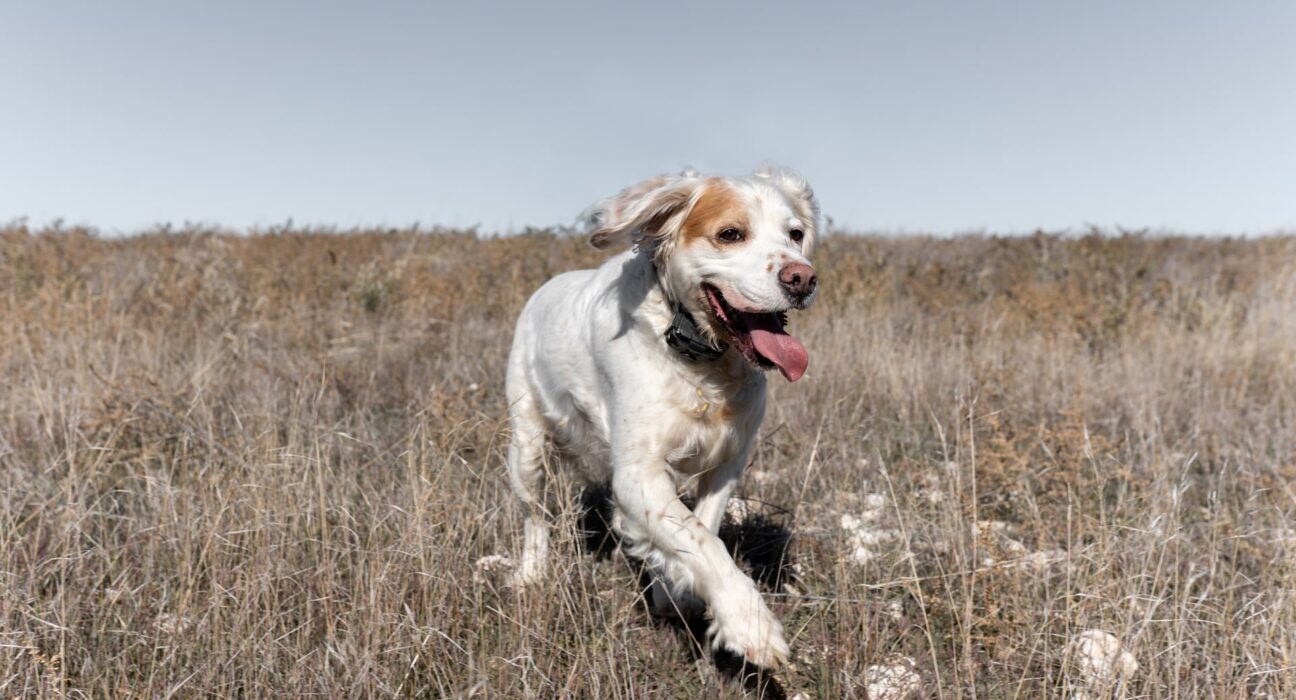The English setter is a breed of gun dog that has been around since the 18th century. They were first developed in England as hunting dogs, but they have become popular all over the world due to their friendly, gentle nature and loyal companionship.
This breed stands out from other sporting breeds because of its unique feathering, or coat, which is made up of long silky fur on its legs and body.
The English setter can trace its ancestry back to several other setters, including the Irish Red and White Setter and the Gordon setter.
English Setter Appearance
The English setter is a medium-sized dog with an elegant frame and graceful gait. Their bodies are long and lean, with well-defined musculature.
The head is long and narrow, with a slightly domed skull and dark eyes that express an intelligent expression.
They have drooping ears set low on the head, and their tail is docked to a medium length. The breed’s signature feature is its coat, which consists of long silky fur that is either white or buff-colored with black or liver-colored patches.
English Setter Temperament
English Setters are generally gentle, friendly dogs who love spending time with their people. They thrive on companionship and enjoy being part of a family pack.
Because of their hunting instinct, they can be energetic and need plenty of exercise, but they are also very loyal and devoted to their owners.
They are intelligent dogs and can be trained easily, although they have a strong prey drive which must be managed with consistent training.
These dogs are usually good with other pets and children but may become protective of their family if not properly socialized.
English Setter Health Issues
English Setters are usually healthy and hardy dogs, but like all breeds, they are prone to certain health issues.
· Elbow Dysplasia
Elbow Dysplasia is an inheritable condition in which the bones of the forelegs do not grow correctly. This can cause pain or lameness and often requires surgery.
Breeders of English Setters need to have their breeding stock tested for this condition and only use those that test clear to produce puppies.
· Deafness
Deafness is uncommon but can occur in any breed. It is caused by a mutation of the gene that controls hearing development.
If a puppy is born deaf, it can be trained with hand signals or other approaches, but the best way to reduce the incidence of deafness in the breed is for breeders to have their breeding stock tested and only use those that test clear.
· Hypothyroidism
Hypothyroidism is another hereditary disorder that may affect English Setters. This condition occurs when the thyroid gland does not produce enough hormones, which can lead to weight gain, sluggishness, and coat problems. Fortunately, this condition is quite treatable with daily medication.
· Canine Hip Dysplasia (CHD)
Canine Hip Dysplasia (CHD) is an inherited disease in which the hip joint develops abnormally and can cause pain, lameness, and arthritis. CHD often requires surgery to correct.
As with elbow dysplasia, breeders of English Setters should have their breeding stock tested for CHD and only use those that test clear to produce puppies.
While English Setters are usually healthy and hardy dogs, it is important to be aware of the potential health issues they may face to ensure that puppies produced from any given litter are as healthy as possible.
Breeders should also ensure regular checkups for their dogs and consult with a veterinarian if any signs of illness or discomfort arise.
By taking these steps, English setter owners can help ensure that this beloved breed remains healthy for many years to come.
English Setter Care Tips
Grooming is a very important part of caring for your English setter. Brush your pet’s coat at least once a week with a rubber curry brush, and always use a wide-toothed comb to remove any tangles.
Also, bathe your English setter every 2 to 3 months with a mild shampoo made specifically for dogs. Finally, have his nails trimmed once or twice per month by a professional groomer or veterinarian.
In addition to grooming needs, make sure you give your English setter regular exercise to keep him healthy and happy.
A daily walk is recommended, but make sure it’s not too long as they can tire quickly due to their short noses (brachycephalic). Playing in a safe, enclosed area is also advised as it provides valuable mental stimulation.
It’s also important to remember that English Setters are social creatures and must regularly interact with people or other animals.
This can be done through activities such as fetch, tug-of-war, or hide-and-seek. You can even take your pet for car rides or trips to the dog park.
You should provide plenty of water and quality food for your English setter. It’s best to feed him two smaller meals each day rather than one large meal.
Also, ensure his diet consists of lean proteins, fruits, and vegetables. If you’re unsure about what type of food to give your pet, consult your vet for advice.
Finally, make sure you give your English setter regular checkups with the veterinarian and keep him up to date on all necessary vaccinations. This will help ensure he remains healthy and happy throughout his life.
Caring for an English setter is a big responsibility but can also be very rewarding. If you take the time to provide your pet with proper nutrition, grooming, exercise, and socialization, then you’ll have a best friend for many years to come.
Overall, the English setter is an easy-going breed that loves spending time with its family and requires just the right amount of exercise for its size. With proper care and training, these dogs can make wonderful lifelong companions.
Setting Rules With An English Setter
When it comes to training your English setter, one of the most important things you can do is set clear rules and boundaries.
Make sure that everyone caring for the dog is familiar with your expectations so that behaviors are consistent across all settings.
Establishing a few basic rules will help you gain respect from your pup and provide structure and direction for their behavior.
First and foremost, establish a daily routine for walks and playtime. This will give your pup something to look forward to each day, as well as provide much-needed exercise, which can help reduce boredom and unwanted behaviors.
In addition to this, designating specific areas within your home or yard for your pup to explore is another great way to help them adjust to their environment.
It’s also important to provide plenty of positive reinforcement when introducing new commands and behaviors.
Give treats or verbal praise for good behavior, and avoid punishing any mistakes your dog may make. This will ensure that they look forward to their training sessions, as well as encourage them to focus on the task at hand.
Finally, practice patience when it comes to training an English setter. While these dogs are often eager learners, they can become easily distracted or overwhelmed if faced with too much stimulation all at once.
By breaking down each lesson into small, manageable steps, you can prevent frustration on both ends and set your pup up for success in the long run.
By following these simple steps, you’ll be well on your way to training a happy and obedient pup! With consistent reinforcement and plenty of patience, your English setter will soon learn to respond to commands and become an ideal companion.
Conclusion
The English setter is an active, loyal, and social breed that can make a wonderful addition to any family. While they are generally healthy, owners need to be aware of the potential health conditions they may face to ensure their pet stays as healthy as possible.
Proper care, including regular grooming, exercise, and nutrition, is essential for any dog, especially for the English setter.
By taking these steps, you can ensure your pet will be a loyal and loving companion for many years to come.

